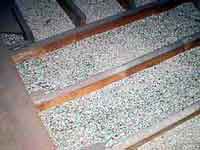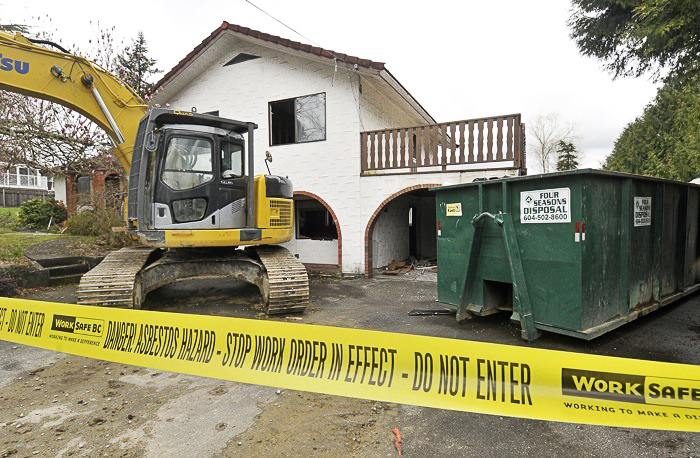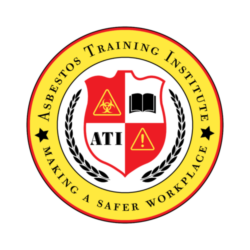Asbestos
Asbestos
What is Asbestos?
Asbestos is a group of naturally occurring silicate minerals. Mined and milled from native rock, asbestos is fibrous, thin, and strong. Chrysotile, amosite, crocidolite, tremolite, anthophyllite, and actinolite fibers are the most common types of asbestos minerals. However, only chrysotile, crocidolite, and amosite varieties are of industrial importance. Characteristics, like heat resistance, chemical inertness, and insulating capacity, coupled with the flexibility to be woven make asbestos suitable for use in many industrial applications.
Asbestos Q&A
What are the health effects of asbestos exposure?
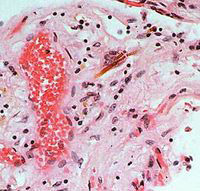
Asbestos fibres embedded in lung tissue may develop into Mesothelioma – an incurable form of cancer
Renovating or demolishing houses containing asbestos products can release asbestos fibres, which are extremely fine and can stay in the air for hours. Breathing in asbestos fibres may cause serious health problems, including lung disease and cancer.
Asbestosis is the name given to scarring and stiffening of the lungs caused by inhaling asbestos dust over many years. It makes breathing difficult and may lead to fatal diseases such as pneumonia and heart disease. Exposure to asbestos can also cause lung cancer and mesothelioma, which is a rare cancer of the linings of the lungs and abdomen.
Asbestos-related diseases usually develop many years after a person has been exposed to asbestos. The risk of developing these diseases increases with the amount of asbestos in the air you inhale and the length of time you are exposed.
What are the health effects of asbestos exposure?
Asbestos hazards in an older home
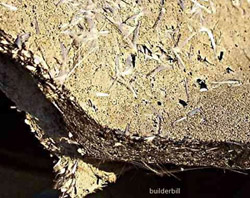
High concentration of asbestos found in cement
shingles also known as Transite Board.
When you are renovating or demolishing an older house, there is a very high probability of encountering asbestos containing building materials. Homes built from the early 1920s to the late 1990s are known to contain multiple types of asbestos containing products. There are hundreds of different asbestos containing building materials above and beyond insulation. Small percentages as low as 0.5% content pose a health risk to one’s health and need to be removed by a qualified and experienced abatement contractor.
List of Common Suspected Asbestos Containing Materials (ACMs):
Please be aware that if asbestos containing materials are in good condition and left intact, they do not pose a significant danger of releasing asbestos. These materials are only hazardous when they deteriorate or are disturbed, such as when they are handled, sanded, drilled into, or broken up so that they crumble.
- Blown Insulation
- Boiler Insulation
- Brick Mortar
- Cement Wall Board or Shingles
- Ceiling Tile
- Electrical Wiring
- Drywall Mud/ Joint Compound
- Duct Insulation
- Texture “popcorn” Ceiling
- Linoleum Flooring
- Paper Tape
- Plaster
- Pipe Insulation
- Roof Membrane and Shingle
- Transite or Cement Board
- Sheet Flooring
- Exterior Stucco
- Vermiculite Insulation
- Vinyl Floor Tile
- Window Caulking or Putty
This list is not comprehensive and contains only the most frequently occurring asbestos containing building materials found in older homes.
Asbestos hazards in an older home
How do I find out if my house contains Asbestos?
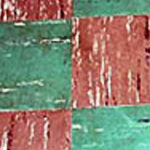
Vinyl Floor
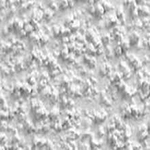
Texture Coat
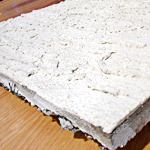
Stucco
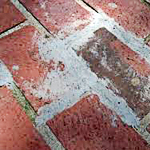
Brick Mortar
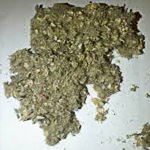
Blown Insulation
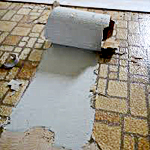
Linoleum
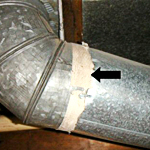
Paper Tape
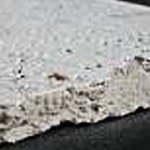
Ceiling Tile
If your house was built prior to 1995, it is required by WorkSafeBC that you test for asbestos and lead prior to renovation and demolition. An Epoch Environmental technician adheres to WorkSafeBC’s minimum sampling guidelines when collecting suspected building materials. They are sent to an accredited laboratory, Epoch Analytical for testing.
It is not recommended that you collect samples on your own as you may not have knowledge about which materials may contain and where they may be concealed. Asbestos fibres are microscopic and cannot be identified with the naked eye. Furthermore, most city demolition permit processes require a Qualified Professional to conduct the Hazardous Materials Survey/Assessment.
How do I find out if my house contains asbestos?
What about Vermiculite Insulation?
Vermiculite insulation is commonly found in attics and crawlspaces
According to WorkSafeBC, vermiculite insulation containing ‘any %’ amount of asbestos is considered an asbestos containing material.
Vermiculite has been used in various industries for over 80 years. It is used in the construction, agricultural, horticultural and industrial markets. Vermiculite is the mineralogical name given to hydrated laminar magnesium-aluminum-iron silicate which resembles mica in appearance. Vermiculite has an unusual golden tan to iridescent white popcorn appearance.
Vermiculite is not a form of asbestos, however vermiculite ores from some mines have been found to naturally contain asbestos minerals, namely Actinolite and Tremolite. In BC, a significant quantity of our Vermiculite supply (sold under the trade name “Zonolite”) was extracted from the Libby Mine in Montana USA. This mine had a natural deposit of asbestos which resulted in the vermiculite being contaminated. If you have vermiculite in your home, it is reasonable to assume that is may be asbestos containing. Vermiculite insulation is commonly found in attic spaces, ceilings and behind the walls of older homes.
What about Vermiculite Insulation?
What are the likely sources of asbestos in my home?
You can’t identify asbestos by looking at it. Asbestos fibers are microscopic. The only way to confirm its presence is to take a sample of the material and have it tested by an accredited laboratory.
Asbestos is often mixed with other materials. If you work in a building built before 1990, it’s likely that at least some parts of the building will contain asbestos.
There are over 3000 construction and industrial products. Common applications include:
Most products made today do not contain asbestos. Those few products made which still contain asbestos that could be inhaled are required to be labeled as such. However, until the 1970s, many types of building products and insulation materials used in homes contained asbestos. Common products that might have contained asbestos in the past, and conditions which may release fibers, include:
- STEAM PIPES, BOILERS, and FURNACE DUCTS insulated with an asbestos blanket or asbestos paper tape. These materials may release asbestos fibers if damaged, repaired, or removed improperly.
- RESILIENT FLOOR TILES (vinyl asbestos, asphalt, and rubber), the backing on VINYL SHEET FLOORING, and ADHESIVES used for installing floor tile. Sanding tiles can release fibers. So may scraping or sanding the backing of sheet flooring during removal.
- CEMENT SHEET, MILLBOARD, and PAPER used as insulation around furnaces and woodburning stoves. Repairing or removing appliances may release asbestos fibers. So may cutting, tearing, sanding, drilling, or sawing insulation.
- DOOR GASKETS in furnaces, wood stoves, and coal stoves. Worn seals can release asbestos fibers during use.
- SOUNDPROOFING OR DECORATIVE MATERIAL sprayed on walls and ceilings. Loose, crumbly, or water-damaged material may release fibers. So will sanding, drilling, or scraping the material.
- PATCHING AND JOINT COMPOUNDS for walls and ceilings, and TEXTURED PAINTS. Sanding, scraping, or drilling these surfaces may release asbestos.
- ASBESTOS CEMENT ROOFING, SHINGLES, and SIDING. These products are not likely to release asbestos fibers unless sawed, dilled, or cut. ARTIFICIAL ASHES AND EMBERS sold for use in gas-fired fireplaces. Also, other older household products such as FIREPROOF GLOVES, STOVE-TOP PADS, IRONING BOARD COVERS, and certain HAIRDRYERS.
What are the likely sources of asbestos in my home?
I have asbestos in my home. Do I need to do anything about it to protect my health?
Most of the time, no. The common materials used in home construction are floor tile, roofing and siding. These materials are very strong and don’t readily crumble and release the asbestos fibers unless they are subjected to strong forces. Occasionally other materials such as pipe insulation and thermal insulation, such as batt or blown-in insulation, are used in home construction. If you determine that you have this type of material, through inspection and analysis by a properly qualified inspector and laboratory, you should seek the help of a consultant to aid you in determining what you need to do to remedy your situation. If you never have the need to disturb these materials, you may be able to leave them alone. But if you know that a needed repair or renovation will disturb the material, you may want to start planning with your consultant to test and abate the asbestos prior to the project.
I have asbestos in my home.
Do I need to do anything
about it to protect my health?
When do you need a Pre-Renovation or Pre-Demolition Survey (also known as a Hazardous Materials Assessment)?
WorkSafeBC requires a survey for Hazardous Materials to be completed by a qualified professional before any demolition or renovation work begins on structures built prior to 1995. Additionally, WorkSafeBC also requires written confirmation that ALL hazardous materials identified in the survey have been either safely contained or removed. In most cities and municipalities in BC, this survey is a condition of the demolition or deconstruction permit process.
The Hazardous Materials Survey is also a valuable pre-purchase report for home and building buyers to fully understand the potential scope (and cost) of remediation that a building or home may require prior to renovation. Please contact Epoch Environmental Consulting for more information. Epoch staff employs WorksafeBC certified Level S trained consultants and field technicians who have hands-on experience with many types of asbestos and hazardous materials issues. For over 30 years, Epoch Environmental Consulting has accumulated in-depth knowledge and experience to form the basis of their ability to efficiently manage remediation projects. Its partnership Epoch Analytical Inc, enables our experts to ensure concise and quality results and quick turnaround, from the proposal stage through to project completion.
When do you need a Pre-Renovation or Pre-Demolition Survey (also known as a Hazardous Materials Assessment)?
Do I need a permit to remove asbestos?
You will need a permit from the city or municipality for pre-demolition or pre-renovation work. The requirements vary from city to city, so please contact City Hall directly. A Notice of Project must be filed with WorkSafeBC by the employer, owner, or prime contractor for any asbestos work at least 48 hours before starting construction work activities. A copy of the completed from must be posted at the worksite before asbestos removal activities commence.
Do I need a permit to remove asbestos?
What is a Clearance Letter?
A Clearance Letter is a document used by industry to tell their clients or other stakeholders (e.g. demolition contractors) that asbestos has been removed and the building is safe to demolish. You can request a clearance letter from the surveyor or contractor, even if a permit was not required for your renovation.
Before the city grants pre-renovation or pre-demolition permit, the city may require a Clearance Letter from the asbestos surveyor or asbestos abatement contractor. Asbestos testing labs do not produce Clearance Letters.
What is a Clearance Letter?
What is a WorkSafeBC shut down?
When an abatement work site is not meeting compliance with WorkSafeBC Ocuppational and Safety regulations, the site can be ordered to stop work and shut down until compliance orders are addressed and corrected. A full investigation will ensue by a WorksafeBC officer who will thoroughly inpect your site and corresponding documentation. It is always worthwhile to choose a qualified contractor and/or professional to help conduct your project safely and lawfully. Hiring an unqualified or untrustworthy contractor may be significantly cheaper than the competition, but the risk of doing so may incurr unnecessary delays and additional financial burden to your budget if your site is shut down by WorkSafeBC.
Should the abatement contractor also conduct the air monitoring?
Air monitoring must be conducted by a third party laboratory or consulting agency. It should never be conducted by the abatement contracting staff. This is a serious conflict of interest and is not an acceptable industry practise.
How do I find a qualified abatement contractor?
WorkSafeBC does not maintain a director of abatement contractors nor does the province license them. This means, you must be extremely vigilant in who you hire for abatement services. We recommend the BC Hazardous Materials Association of BC and checking their credentials and verifying their rating at the Better Business Bureau. We recommend our affiliate company, Universal Environmental Services which has been operating since 1994 and is a member of both associations.
What is a WorkSafeBC shut down?
How much does it cost to conduct a Hazardous Materials Inspection?
The cost of a Hazardous Materials Inspection varies on the following factors:
Should the abatement contractor also conduct the air monitoring?
- Size of building in square feet;
- # of samples taken from the building as per WorkSafeBC minimum sampling requirements;
- Location and distance of building;
- Accessiblity of the building;
- Any other safety considerations;
Please contact us today for a free quotation based on the information you provide to us.
How much does it cost to conduct a Hazardous Materials Inspection?
Can I anonymously report suspicious or unsafe work activity?
Do you suspect unsafe practices at the site?
Do you think the contractor is not following WorkSafeBC guidelines with respect to safe removal and disposal?
Do you think the building owner, landlord or contractor has not tested for hazardous materials and is proceeding to do work anyway?
If you have question about the above, these are all legitimate reasons to have a WorkSafeBC officer intervene. They can check to see if a Notice of Project was received before work commenced.
Call WorkSafeBC’s Prevention Information Line:
Phone: 604.276.3100 (Lower Mainland)
Phone toll-free (Canada):1.888.621.7233 (1.888.621.SAFE)
Can I anonymously report suspicious or unsafe work activity?
Consult a qualified professional now at
EPOCH ENVIRONMENTAL CONSULTING
for more information.
FRASER VALLEY
#103 – 2602 Mount Lehman Road, Abbotsford,
BC V4X 2N3
Office: (604) 776-3370
Email: info@epochenvironmental.ca
Office hours: 8:30 am to 5:00 pm
For Emergency 24 /7 Response:
(604) 521-6806
COQUITLAM
#100 – 42 Fawcett Road, Coquitlam,
BC V3K 6X9
Office: (604) 553-3370
Email: info@epochenvironmental.ca
Office hours: 8:30 am to 5:00 pm
For Emergency 24 /7 Response:
(604) 776-3370
THOMPSON-OKANAGAN
#7b – 1404 Hunter Court
Kelowna, BC V1Y 6N9
Office: (250) 980-6925
Email: admin.eo@epochenvironmental.ca
Office hours: 8:30 am to 5:00 pm
For Emergency 24 /7 Response:
(250) 258-0028

